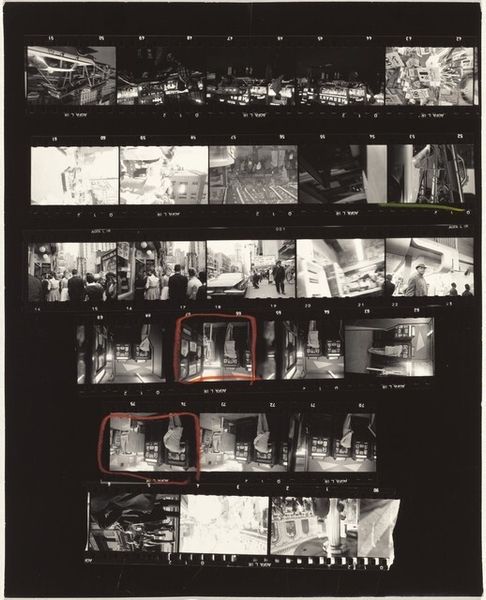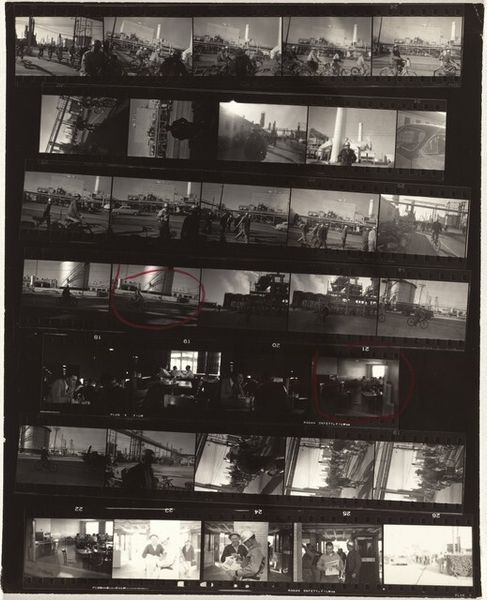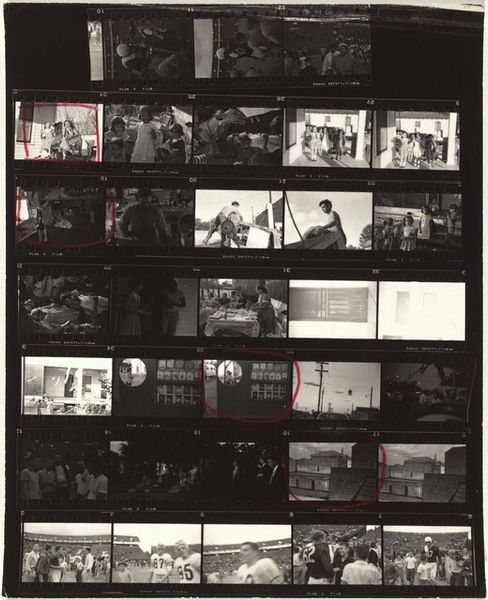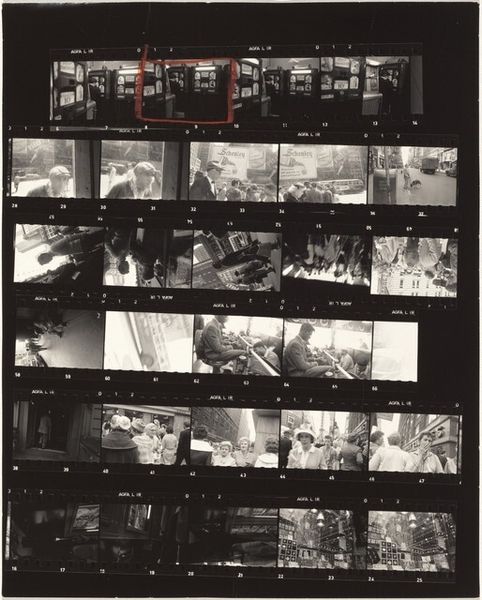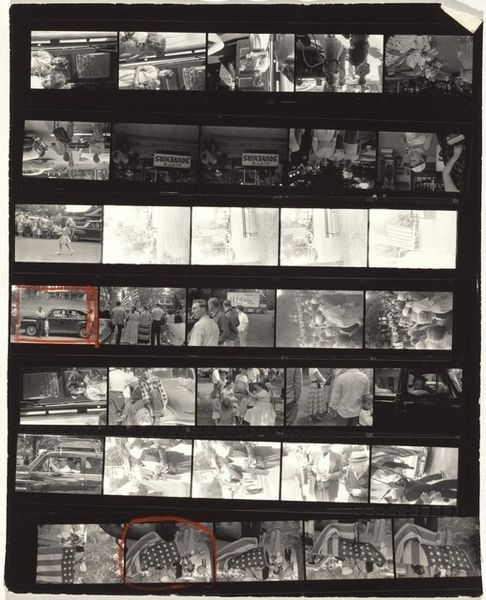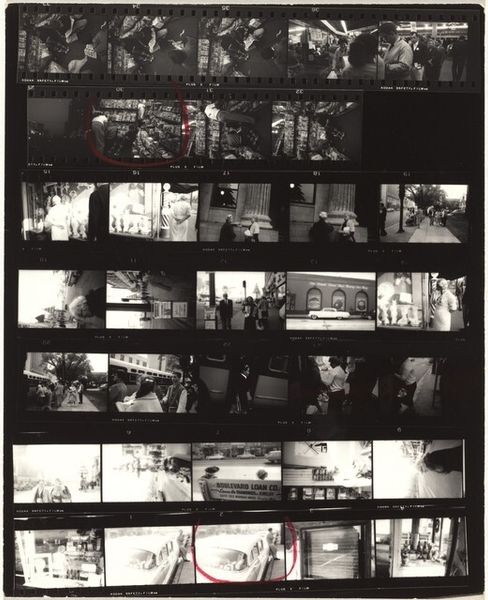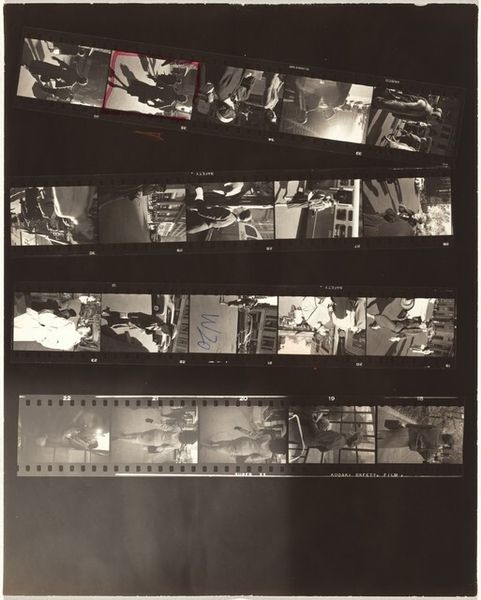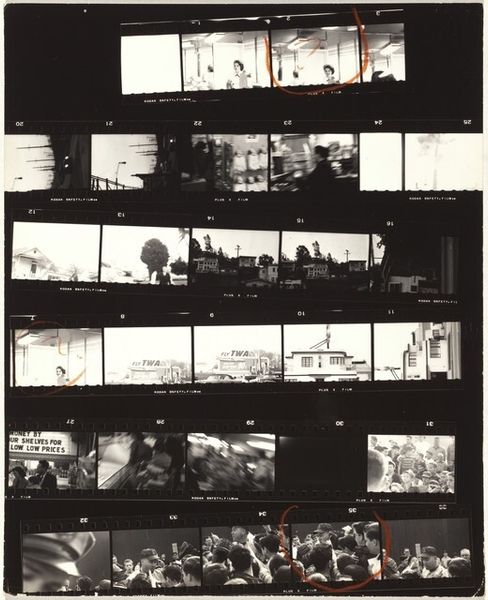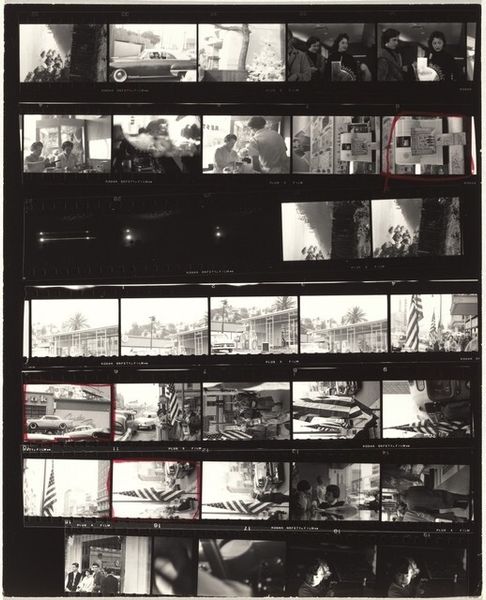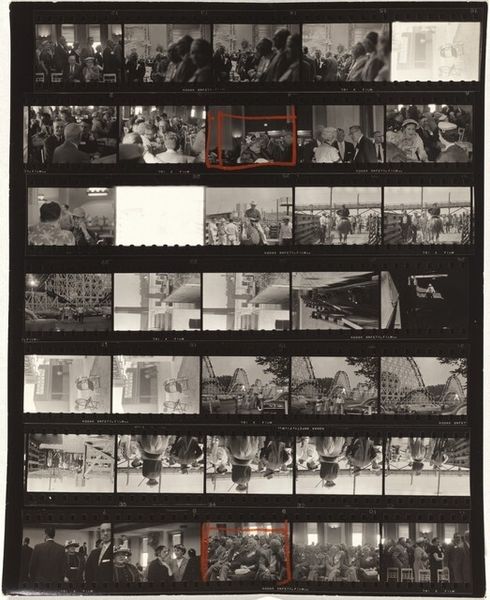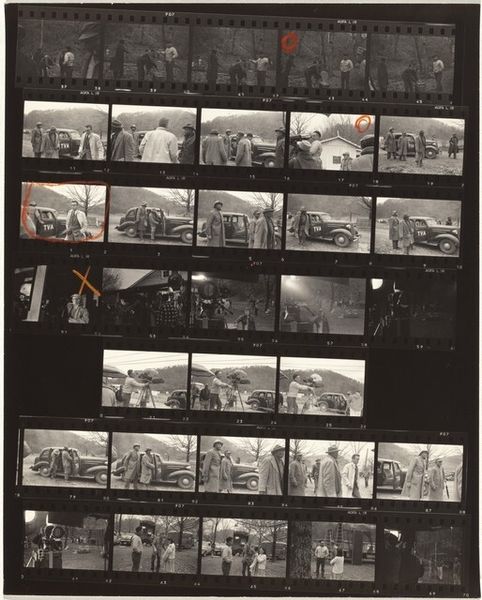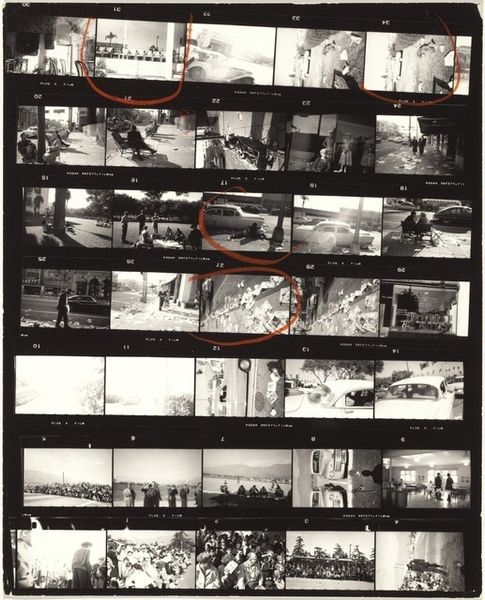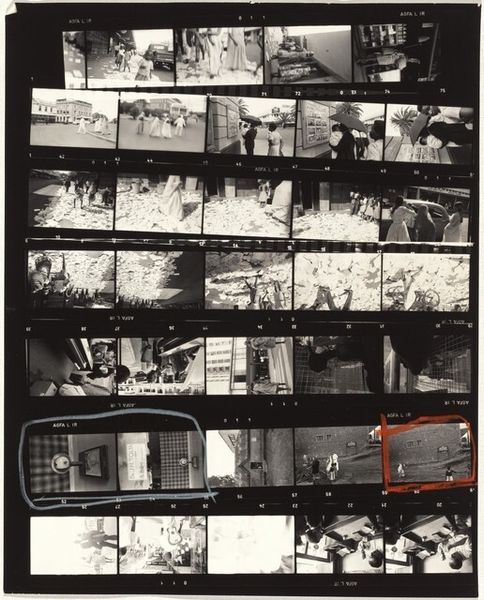
photography, gelatin-silver-print
#
landscape
#
social-realism
#
photography
#
gelatin-silver-print
#
modernism
Dimensions: overall: 25.3 x 20.4 cm (9 15/16 x 8 1/16 in.)
Copyright: National Gallery of Art: CC0 1.0
Editor: We’re looking at Robert Frank’s "Guggenheim 343—Esso oil refinery, Baton Rouge, Louisiana," taken in 1955. It's a gelatin-silver print showing a strip of negatives. It has a fascinating, almost melancholic feel, even within the industrial setting. How do you connect with this particular work? Curator: What I find so striking is the raw, unpolished presentation. Frank isn't just showing us the refinery; he’s showing us the *process* of seeing, right down to the sprocket holes of the film. It’s almost as though he's asking us to consider what we choose to frame as significant, both as an artist and as a society. Don't you think? Editor: Absolutely. The film strip format makes it feel less like a posed portrait of industry and more like… a fleeting glimpse. Were those the kind of attitudes he typically represented? Curator: Exactly! It really challenges the conventional idealization of post-war industry. The people seem anonymous, dwarfed by the machinery. It is part of his seminal work 'The Americans' a project fueled by the Guggenheim. We see here how Frank's photography really challenged the glossy, optimistic facade that often characterized the era. Editor: So, less "American Dream" and more… the gritty reality behind it. I see what you mean. It really gives the work depth beyond a simple industrial landscape. Curator: Indeed! It invites a level of critical engagement, not just admiration. A kind of looking that lasts, that sees, that stays. Editor: Thank you. I am finding that Frank asks that same critical and lasting seeing to his viewers, and that perspective of cultural criticism really makes me think about photography in a totally different way.
Comments
No comments
Be the first to comment and join the conversation on the ultimate creative platform.
